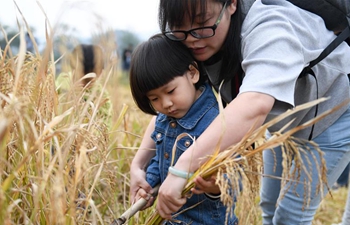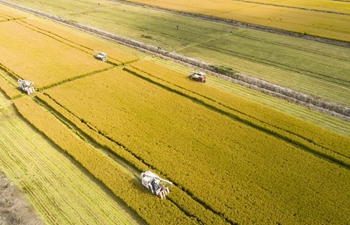YINCHUAN, Oct. 22 (Xinhua) -- Shao Dongsheng, a ranger in northwest China's Ningxia Hui Autonomous Region, still remembers the fear he felt the first time he encountered a leopard.
"It was on the hillside only 30 meters away from me; I stood still because I was too afraid to move. It looked at me, turned away and then left," Shao recalled.
For Shao and his fellow rangers in the mountains of Shanhe township in Longde County, this is not an uncommon experience. Leopards, wolves, and deer are often seen roaming the hillsides.
"As villagers moved away, trees and grass flourished, and more animals emerged from the deep forests," Shao said.
Shanhe, with around 6,000 residents, is located in the Xihaigu area, a predominantly mountainous region once labeled the "most unfit place for human settlement" by the United Nations in the 1970s due to land reclamation, drought, and a fragile ecological environment.
"We planted trees each year, but still saw no forest," said Wei Dianlong, 72, head of the local forestry station.
Wei said the villagers cut down trees in the autumn to use for heating during the winter. They also herded their cattle and sheep on the hills, eating up all the grass.
"As rangers, we didn't have to prevent forest fires," Wei said, "Because there simply was no forest."
In 2013, the regional government launched a program to relocate the villagers to places with better infrastructure. In the past three decades, more than 1.2 million people have been relocated from the Xihaigu area.
"As people migrated, we planted trees and grass on the hills, and enclosed it for natural afforestation," Shao said.
Most of the villager's houses have been torn down, with only a few remaining in the forest now covered by verdant trees.
In Longde County where the village is located, immigration has helped free up 17,700 hectares of land. Around 6,667 hectares have been designated for growing forests. Forest coverage in the former villages has risen from 42 percent to 87 percent.
Over the next three years, the region plans to recover another 100,000 hectares of forest.
On a winding mountain path in Shanhe, a trail of footprints in two different sizes is imprinted in the dirt.
"It's the trail of a boar and her baby," Shao said, "It shows the environment is getting better."
















